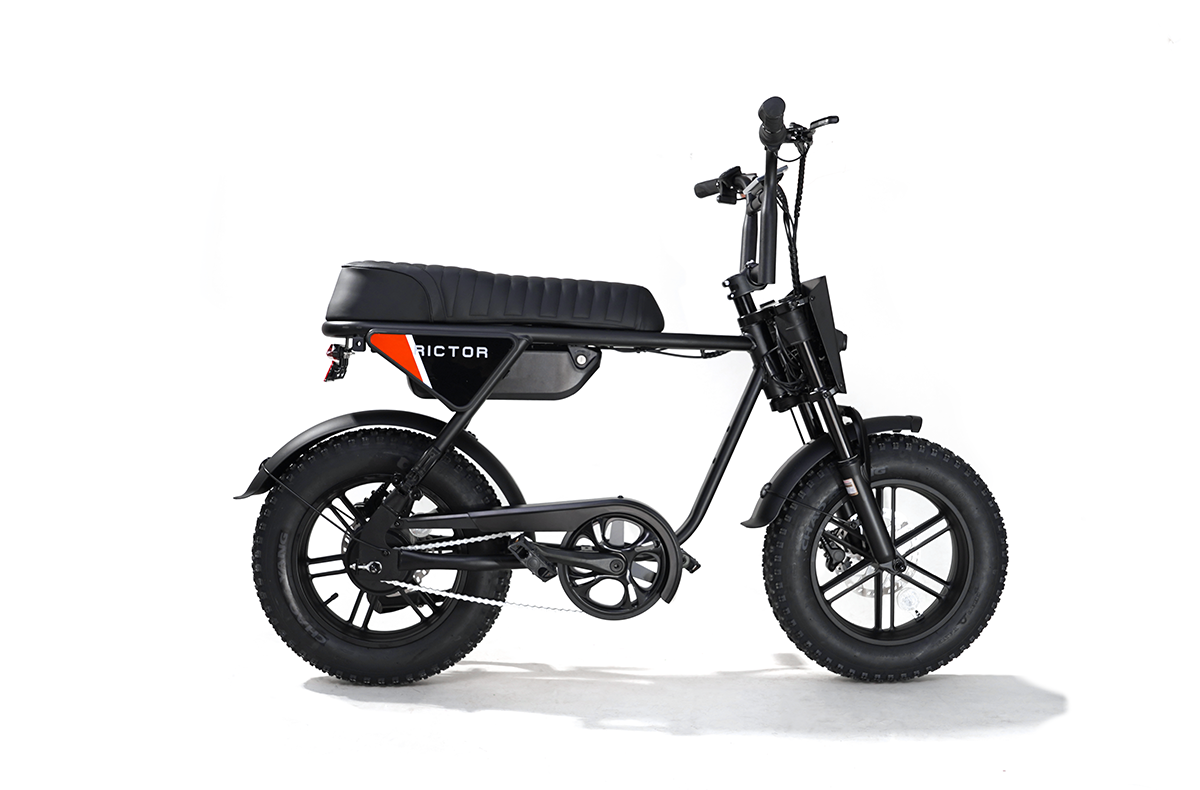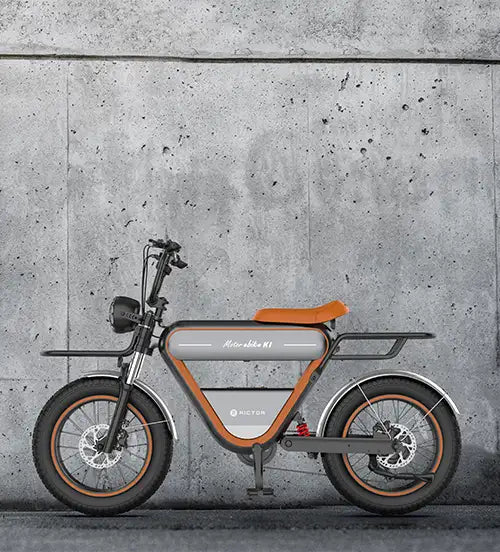
E-Bike Battery Maintenance: What Every Rider Needs to Know
Proper care and maintenance of the battery are essential not only to extend its lifespan but also to ensure consistent performance and avoid costly replacements. Understanding how to charge, store, and handle your e-bike battery correctly can make a significant difference in how long it lasts and how well your bike performs. This guide offers practical and effective strategies to help you protect your battery, maximize its efficiency, and enjoy a reliable, smooth riding experience for years to come.
Understanding how Electric Bike Batteries work
Electric bike batteries serve as chemical energy storage units that convert to electrical power on demand. Made up of multiple lithium-ion cells, these batteries work through electrochemical reactions. When you activate your e-bike's motor, the cells release electrons, creating electricity that powers the motor and boosts your ride. Charging reverses this process, returning electrons to storage for future use. This cycle—chemical energy converting to electrical during use and back while charging—is the core principle that makes e-bikes a practical and efficient transportation option.
Understanding Battery Specifications
Voltage (V)
Battery voltage represents its potential power—much like water pressure in a hose—with higher values indicating greater strength. A 48V battery delivers more power than a 36V model, but compatibility between battery and motor voltage is crucial. Matching these components prevents either power waste from an underrated battery or potential motor damage from excessive voltage. Similarly, chargers must match your battery's voltage rating for safe operation.
Amp-hours (Ah)
While voltage indicates power potential, amp-hours (Ah) measure capacity—how long the battery can sustain operation, typically ranging from 8-15Ah in e-bikes.
Watt-hours (Wh)
For a comprehensive single measurement, watt-hours (Wh) combine both factors by multiplying voltage by amp-hours to measure total energy capacity. For instance, both a 48V 15Ah and a 36V 20Ah battery offer 720Wh, though their performance characteristics may differ significantly. Making the right battery choice requires looking beyond these basic specifications to match your specific e-bike needs.
Understanding E-Bike Battery Life Span
The lifespan of an electric bike battery is influenced by several important factors. Frequent use and regular recharging cause the battery to approach its maximum number of charge cycles more quickly, naturally reducing its overall longevity. Proper storage is equally crucial; exposing the battery to extreme temperatures or leaving it at a very low charge for extended periods can significantly accelerate its degradation. Additionally, the way you ride affects battery life-relying heavily on motor power without pedaling increases energy consumption and drains the battery faster. It’s also advisable to avoid fully depleting the battery to 0% too often, as deep discharges can cause early wear and reduce the battery’s capacity over time. Taking care to balance usage, storage, and riding habits can help extend the battery’s effective lifespan.
Essential Practices for E-Bike Battery Maintenance
1. Optimal Charging Habits
Charge your eBike battery within moderate temperatures, ideally between 50°F and 77°F (10°C to 25°C), since extreme heat or cold can damage the battery cells. Always use the charger provided by the manufacturer or one specifically designed for your battery model to ensure compatibility and safety. Regular charging is important, even if you don’t ride often, to avoid deep discharges that harm battery health. For long-term storage, keep the battery charged between 20% and 80%, which helps maintain its capacity and prevents over-discharge or overcharge.
2. Proper Storage Conditions
When storing your eBike for extended periods, place the battery in a cool, dry environment away from direct sunlight or moisture. Before storage, charge the battery to about 50% to balance the cell voltage and reduce stress. If possible, remove the battery from the bike to protect it from temperature fluctuations and accidental damage. Storing the battery indoors during extreme weather seasons can significantly extend its lifespan.
3. Temperature Management During Use
Avoid charging or using the battery immediately after heavy rides or when it feels hot, as overheating can degrade battery performance. High temperatures from steep climbs, warm weather, or incompatible chargers can cause the battery to overheat. Allow the battery to cool down before charging or riding again. In cold weather, keep the battery warm by insulating it or using a protective cover to maintain efficiency and prevent capacity loss.
4. Thoughtful Charging Timing
Patience is key when charging your eBike battery. After finishing a ride, give the battery a few minutes to rest before plugging in the charger, allowing it to stabilize. Similarly, once charging is complete, unplug the battery and wait a few minutes before riding. This brief pause helps the battery’s internal chemistry reset and prepares it for optimal power delivery during your ride.
5. Avoid Overcharging and Deep Discharges
Unplug the charger once the battery reaches 80% to 100% to prevent unnecessary strain, even though modern batteries have protection circuits. Consistently allowing your battery to drop below 30% charge accelerates wear and reduces its overall lifespan. Keeping the battery topped up whenever possible helps maintain health and ensures you won’t be caught off guard by sudden power loss during rides.
6. Keep Your Battery Dry and Clean
While eBike batteries are designed with waterproof covers, avoid exposing them to excessive moisture during cleaning or storage. High-pressure water jets can penetrate seals and damage internal components. Clean your bike gently with a damp cloth and store it indoors to protect the battery from rain, snow, and humidity, which can degrade the protective casing over time.
7. Safe Transport and Handling
When traveling with your eBike, always remove the battery before placing the bike on a car rack or packing it for shipment. This prevents damage from vibrations, impacts, or weather exposure. Use padded cases or protective covers for the battery during transport to shield it from shocks and moisture. Proper handling reduces the risk of accidental drops or short circuits.
8. Winter Riding and Battery Efficiency
E-bike batteries perform less efficiently in cold weather, resulting in reduced range and power output. Plan shorter rides or schedule more frequent charges during winter months to compensate. Keep the battery warm before and during rides by storing it indoors and using insulated covers. Remember that battery performance will recover as temperatures rise, so avoid prolonged exposure to freezing conditions.
SEE ALSO How long do e-bike batteries last on one charge
Innovative Tips for Enhanced Battery Care:
- Smart Charging Scheduling: Use a smart plug or charger with a timer to automate charging during off-peak hours, reducing heat buildup and optimizing electricity costs.
- Battery Health Monitoring Apps: Utilize apps or built-in eBike diagnostics to track battery health, cycle count, and temperature trends, enabling proactive maintenance.
- Partial Charging Cycles: Instead of always charging to 100%, try partial charges between 40% and 80% during daily use to reduce stress on battery cells and extend lifespan.
- Use Regenerative Braking (if available): Some eBikes offer regenerative braking that feeds energy back into the battery, helping maintain charge and reduce wear.
- Regular Firmware Updates: Keep your eBike’s software up to date to benefit from improved battery management algorithms that optimize charging and discharging processes.
By following these structured maintenance practices and incorporating innovative care strategies, you can maximize your eBike battery’s performance, reliability, and longevity for many enjoyable rides ahead.
Love Your E-Bike Battery & It’ll Love You Back!
Proper battery care can significantly enhance your e-bike experience by extending battery life, saving you money, and ensuring optimal performance. While a larger battery offers greater range, it’s crucial to avoid exposing it to high temperatures, charge it in a safe place, and prevent overcharging. Though all batteries gradually lose capacity over time, following these best practices will help you maximize both your e-bike’s potential and your riding enjoyment.
FAQs
How can I extend the lifespan of my e-bike battery?
To extend your e-bike battery's life, avoid deep discharges (don’t let it drop below 30%), don’t leave it charging after it hits 100%, and always use the manufacturer-approved charger. Store and charge it at room temperature, and aim to keep charge levels between 20%–80% when not in regular use.
What’s the best way to store my battery for long periods?
For long-term storage, charge the battery to about 50%, remove it from the bike, and place it in a dry indoor space away from heat or freezing temperatures. Check the charge every couple of months to ensure it doesn’t drop too low.
Does charging my battery to 100% all the time reduce its health?
Yes, consistently charging to 100% can cause unnecessary stress on the battery cells, especially if it's stored fully charged. For everyday use, charging to 80–90% helps reduce long-term wear and improves battery longevity.





